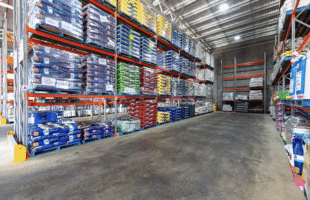
X-ray image of a salmon fillet showing a number of bones still present/Courtesy of Sapphire Inspection Systems
by Dr Richard Parmee, founder and CEO of X-ray inspection technology specialist Sapphire Inspection Systems
Fish is an important part of a healthy diet – a lean source of protein, as well as a rich source of vitamins, minerals, and fatty acids. And major improvements in processing, refrigeration, ice making and transportation mean we can all enjoy a greater variety of fish products than ever before.
But many people are reluctant to eat fish because of the risk of finding bones in their food. Usually long, thin and sharp but difficult to spot, fish bones are not just frustrating to deal with – they can cause serious health issues if swallowed and stuck in the throat.
So the pressure is on to produce fish products free of bones. And that is where technology comes to the rescue. Deboning machines have a useful part to play, but inevitably, some bones occasionally make it into the finished product. They can be particularly difficult to detect as the deboner tends to lift the bone and remove a section of it, leaving just a small section behind.
X-ray inspection technology can help – passing low-energy X-rays through a product to detect bone, as well as contaminants such as metal and glass. Different elements absorb different amounts of X-ray, so contaminants appear darker than the surrounding fish. But, although this works well for metal and glass, fish bones are more of a challenge because they are low density, with low mineral content, and very thin – all of which makes them difficult to detect.
Standard end-of-line X-ray inspection equipment uses a 0.4 mm or 0.8 mm resolution sensor to detect contaminants. However, this cannot identify pin bones and other sub-mm diameter bones. The latest generation of X-ray inspection technology, on the other hand, uses a 0.05 mm (50 micron) resolution area sensor more typically seen in the medical or electronics industries. This unparalleled level of resolution, combined with low-energy X-ray generators, gives rise to images that can reliably show even the smallest fish bones.
Once a high-quality image of the fish – and any hidden bones – is created, it is then processed using automatic inspection software. This looks for features which follow a straight line. However, the separation of muscle fibres in fish means there are long straight features present naturally. The software must therefore be able to differentiate between the dark features, which are caused by bone and the lighter features caused by the natural texture of the fish. This process is made more difficult if the fish has been frozen and then defrosted – or has been excessively processed – as this can cause separation of the muscle, giving rise to false rejects.
The production line can be programmed to reject any products that are shown to contain bones. Or additional control procedures can be put in place – informing the operator, for example, that the deboning machine has fallen out of range and needs attention. Alternatively, the X-ray technology can identify which region of the fish still has bones in – and determine whether this is a high-risk area where no bones can be tolerated or a lower-risk region where the bones are likely to disappear during cooking.
A maximum bone size can be selected – letting through tiny bones unlikely to pose a health risk. It is also possible to count the number of bones and allow through a certain number. This information can also be used to grade fish – sending truly bone-free fish along lane one, while products containing a low number of bones go to lane two, leaving fish with a large number of bones to go to lane three and be reworked.
If the fish is reworked, the X-ray image can be provided to operators at the rework station – showing the location of the bone and so speeding up the process. A return conveyor can then be used to reinspect the fish, ensuring all the bones have been removed correctly.
The ability to detect ever-smaller bones is now playing a key role in the battle to improve product quality. X-ray inspection is giving processors a new perspective when it comes to satisfying the demand for bone-free fish.
Bio

Dr Richard Parmee is the founder and CEO of X-ray inspection technology specialist Sapphire Inspection Systems. As well as designing bespoke solutions, Richard and his team provide a wide range of standard X-ray inspection systems to cater for hundreds of different products in the food, pharmaceutical and cosmetics industries.









